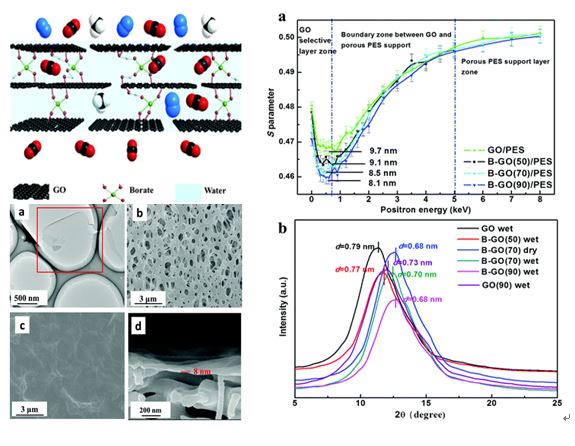A paper entitled A highly permeable graphene oxide membrane with fast and selective transport nanochannels for efficient carbon capture from Zhongyi Jiang’s group of Tianjin University was recently published in Energy & Environmental Science (Impact Factor 25.427), a top journal of the Royal Society of Chemistry. (Shaofei Wang et al, Energy Environ. Sci., 2016, 9, 3107, http://pubs.rsc.org/-/content/articlehtml/2016/ee/c6ee01984f). In this paper, the positron research facility at IHEP has been utilized to provide important supporting data.
In this paper, ultrathin graphene oxide (GO) membranes were designed and fabricated, using borate to cross-link the GO nanosheets and to facilitate the transport of CO2. The membranes showed high CO2 permeance up to 650 GPU and a CO2 / CH4 selectivity of 75. This was because of the phyiscochemcal microenvironment of the nanochannels between layers was manipulated, having appropriate interlayer spacing, having enough facilitated transport carriers, and having high water content. A Doppler broadening energy spectrum on the variable-energy slow positron beam line at IHEP was used to probe the distribution of nanochannels and to identify the functional region of the composite membrane.
In recent years, nearly 300 researchers worldwide have completed experiments at IHEP’s positron research facility. A series of results related to new functional materials, nanomaterials and nuclear structure materials have been published in top academic journals such as JACS, PRL, PRB, APL, CC, PCCP, JMS, Acta Materialia and Nuclear Fusion.

New Nanoscience Results from IHEP Positron Research Facility